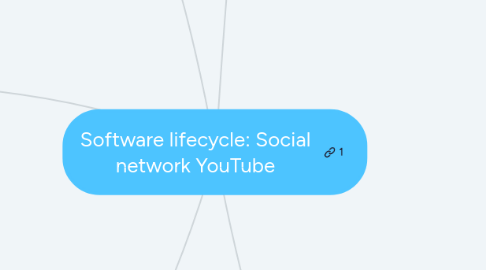
1. CONSTRUCTION
1.1. Development of the structure and database according to NFR 5 and 6.
1.2. Development of security processes
1.3. Interactive Interface Design
2. TEST
2.1. Functional
2.1.1. Creation of user accounts
2.1.2. logon
2.1.3. upload and publication of content
2.1.4. log of comments
2.1.5. indexed search of published content.
2.2. System
2.2.1. Connection to user accounts
2.2.2. connection to the videos
2.2.3. quality tests visualization
2.2.4. Content response time.
2.3. Integration
2.3.1. User interface functionality
2.4. Of Acceptance
2.4.1. Several downloads and loads of content simultaneously
2.4.2. Content consumption on multiple devices
3. PRODUCTION AND MAINTENANCE
3.1. PRODUCTION
3.1.1. Start of software operation in testing environment
3.1.2. Test of administration and evaluation of results.
3.2. MAINTENANCE
3.2.1. Settings
3.2.2. Modifications
3.2.3. Improvements
3.2.4. Updates
4. REQUIREMENTS
4.1. Functional Requirements
4.1.1. FR1: Register users via e-mail
4.1.2. FR2: Log in using a registered email and password.
4.1.3. FR3: Allow registered users to post videos.
4.1.4. FR4: Allow to subscribe to profiles of different users.
4.1.5. FR5: Send and receive notifications when new content is published to subscribed users and vice versa.
4.1.6. FR6: To be able to receive and make comments to published videos.
4.1.7. FR7: Allow to classify the videos seen among those who like the user or not.
4.1.8. FR8: Search for videos published by all types of users.
4.1.9. FR9: Allow to view videos according to the age recorded in the profile.
4.1.10. FR10: Visit counter in each published video.
4.1.11. FR11: Allow video viewing and in parallel perform a new search.
4.1.12. FR12: The videos can be viewed in full screen.
4.2. Non-Functional Requirements
4.2.1. NFR1: Versions compatible with various mobile operating systems.
4.2.2. NFR2: Keep the device in active mode to prevent its blocking.
4.2.3. NFR3: Maintain the style and design of the website.
4.2.4. NFR4: The name of the application must be the same as the web version.
4.2.5. NFR5: Use Python, Java, PHP programming language
4.2.6. NFR6: MySQL Database engine
5. ANALYSIS AND DESIGN
5.1. Analysis and design of the processes.
5.1.1. User registration
5.1.1.1. Inputs
5.1.1.1.1. Email and password
5.1.1.2. Procedures
5.1.1.2.1. Email validation
5.1.1.2.2. Unlinked mail to existing account
5.1.1.2.3. Secure password.
5.1.1.3. Outputs
5.1.1.3.1. unvalidated mail error
5.1.1.3.2. already created account message
5.1.1.3.3. password change message
5.1.1.3.4. successfully created account
5.1.1.4. Controls
5.1.1.4.1. allow you to retrieve the password for an existing account
5.1.1.4.2. report secure password structure and issue suggestions
5.1.2. Video Publishing
5.1.2.1. Inputs
5.1.2.1.1. Video recording directly to the application or upload a video from the device
5.1.2.2. Procedures
5.1.2.2.1. Load the video on the server
5.1.2.2.2. Name mapping
5.1.2.2.3. Tags and initial image of the video
5.1.2.3. Outputs
5.1.2.3.1. Video loaded and available
5.1.2.3.2. Correct upload message and generated link
5.1.2.4. Controls
5.1.2.4.1. Modifications to the video and change of information after publication
5.1.2.4.2. Adequate content control.
5.1.3. Search for Videos
5.1.3.1. Inputs
5.1.3.1.1. Content that is required to be viewed or channel to visit
5.1.3.2. Procedures
5.1.3.2.1. Perform the search for the videos that meet the conditions entered by the user
5.1.3.3. Outputs
5.1.3.3.1. List of videos that meet the search criteria.
5.1.3.4. Controls
5.1.3.4.1. allow you to perform new searches even when a video is playing
5.2. Analysis and design of the data
5.2.1. Stores information relating to data such as
5.2.1.1. Users
5.2.1.2. Videos published
5.2.1.3. Comments
5.2.1.4. Subscribers
5.3. Design and organization of the physical components
5.3.1. Servers for content storage and consumption, user data logging.
5.3.2. Equipment for development and analysis of information.

